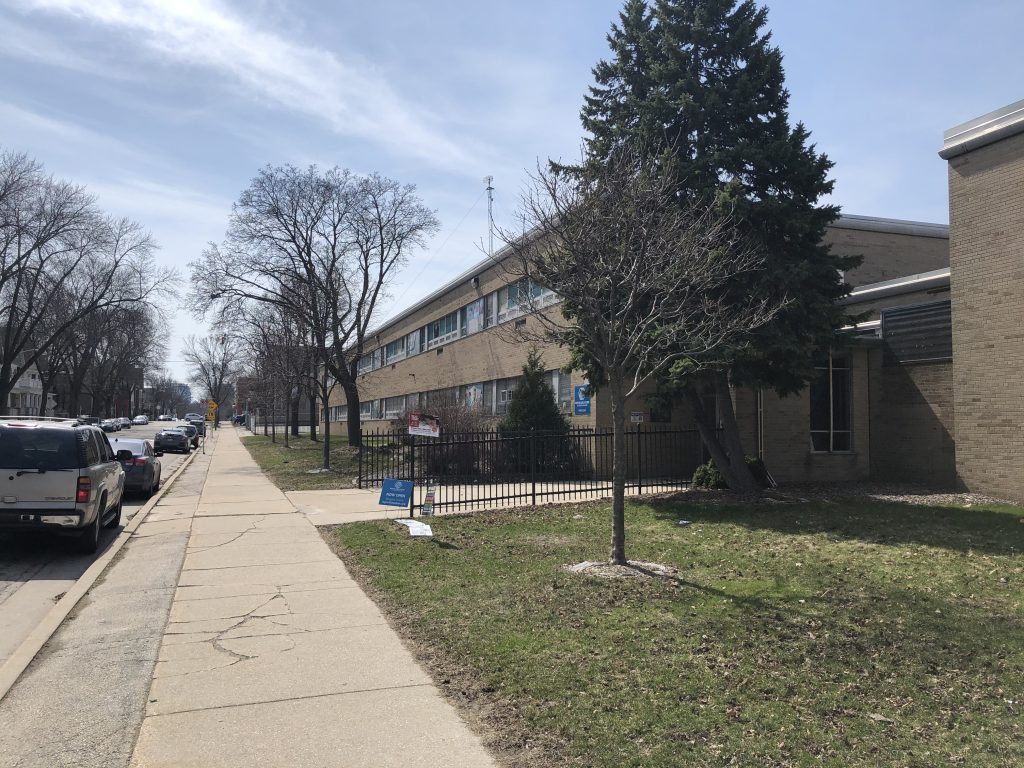MPS Budget Underfunds Teaching Positions
Shortfall will hit $74 million, 14.4% of needed funding in 2024, report finds.
Milwaukee Public Schools (MPS) will underfund its teacher positions by nearly $74 million next year according to an analysis by Matthew Chason, senior director of the MPS Office of Accountability and Efficiency (OAE). That analysis, sent to board members and the administration on Friday, shows that the funding is short by 14.4% of the money needed in the 2024 budget, leaving hundreds of teacher positions unfunded.
Superintendent Keith Posley defended the practice at a recent school board member, saying it is due to uncertainties as to how much funding will be provided in the next state budget. But the number of unfunded positions has been steadily growing since at least 2019, the OAE report shows. The OAE is independent of the superintendent and answers only to the school board. It analyzes administrative reports, contracts and conducts investigations into practices and actions of departments and individual employees.
The report reveals a practice by the MPS administration of producing budgets that underfund teacher vacancies in a process called “vacancy adjustment.” In fiscal year (FY) 2019, the report finds, the district underfunded teacher vacancies by nearly $18 million, leaving the budget 4.3% short of the $413 million needed is all teaching positions were filled.
The vacancy adjustment grew to $31 million in 2022 and to $65 million 2023 or 12.7% of all teaching positions. The 2024 projection is for nearly $74 million, 14.4% of all the listed teaching positions. If the district actually tried to fill these positions, it would have to find money from somewhere else in the budget. Instead, some schools end up short of the teachers they need.
A spread sheet presented by the administration to the school board recently shows great inequities between schools in staffing which are spread across the system. Many specialty schools and those in higher income neighborhoods are fully staffed. Schools in poorer neighborhoods are not. For example, Elm Creative, Trowbridge, and the Montessori schools of Maryland Avenue, Bay View and Fernwood are fully staffed. By contrast many other schools have unfilled openings, with the highest percentage of teacher openings at Lafollette (41. 2% of positions unfilled), Douglas Middle, (46.7%) and King Middle (42%).
Much of the local media has taken the district’s budget presentation at its word. The Milwaukee Journal Sentinel on May 2 stated that the district faced challenges, “But the budget proposal appears to maintain individual school budgets and staff, actually adding about 75 teachers and educational assistants, thanks to some maneuvering.”
In fact, ths data shows the district presently has 353 unfilled vacancies; never mind where the district would get an additional 75 educators.
School board directors are alarmed about the exploding vacancy adjustment rate, but only Director Megan O’Halloran publicly voiced her concern at the May 4 meeting of the board’s budget committee. “In order to get to a balanced budget, I have to hope for $70 million in vacancies,” she noted.
Posley defended the practice at the meeting: “Our goal is to fill every position that we have. We don’t know exactly which dollars we are going to get from the state until the biannual [budget] is complete. If we don’t post these positions out there, and earmark these positions, we can’t hire for them later. We would have to come back and get position to go to post for the jobs… We could go ahead and cut any position that we feel we will not be able to get, but our goal is to try to get them.”
Posley noted the administration’s efforts to hire additional teachers. “We talk about 70 different opportunities out there,” he said. “It’s not for the idea of trying to get them; it’s the idea that the supply and demand piece is not there.” MPS has faced a shortage of candidates for teaching positions for years. It is hiring 140 international teachers for this coming school year, the administration has noted.
What Posley did not address, however, is how the vacancy adjustment rate helps balance the budget. As O’Halloran noted the only way the budget can be balanced is to have “$70 million worth of vacancies next year, and I don’t want to hope for a $70 million worth of vacancies.” And the problem, she noted, keeps growing larger: “It appears that the vacancies get projected larger and larger every year.”
The idea that schools in the system could later fill these vacancies was shot down by the OWA report: “An inspection of a local school budget suggests there are dollars available to fund the requested position authority, while, in actuality, sufficient dollars do not exist due to the district wide vacancy adjustments.” If the request to hire additional teachers exceeds the limited funding “it may produce a first-come/first-funded scenario whereby those [schools] who do not fill authorized positions early enough cannot fill them later due to lack of available funding.”
That would exacerbate the situation revealed by the administration’s spread sheet of schools showing the non-speciality schools in poorer neighborhoods have big vacancies in staff. Known openings beginning in spring are filled through an interview process, and desirable schools are in high demand by teachers. But at schools where no one applies, positions are filled in whatever manner the districts can provide or not at all. That means that desirable schools are likely to get their full complement of specialists in such areas as art and music. Less desirable schools often go without. And their regular classrooms may be staffed with a series of substitute teachers or individuals on provisional licenses.
If you think stories like this are important, become a member of Urban Milwaukee and help support real, independent journalism. Plus you get some cool added benefits.
K-12 Education
-
MPS Training in Science of Reading Going Poorly
 Nov 23rd, 2025 by Terry Falk
Nov 23rd, 2025 by Terry Falk
-
The Fear Factor at MPS
 Nov 11th, 2025 by Terry Falk
Nov 11th, 2025 by Terry Falk
-
MPS Reaching Out to Community
 Nov 2nd, 2025 by Terry Falk
Nov 2nd, 2025 by Terry Falk






















Probably a good time to start disbanding MPS and put the money into better schools that support our poor children of color better.
For Brother Cotic, it’s always time to destroy public education, no matter what the issue. Get a new song, dude.
Early in the history of the United States, public education the critical component in our economic development. It was the spark that led to innovation at a time when other countries, including Great Britain, did not offer universal education. It was also the difference between in the rate of economic growth between free and slave states. The oligarchic powers in Antebellum South believed universal public education, which meant educating poor white children, was a waste of money. The 800 largest plantation owners needed an uneducated populace in order to maintain their total economic, political, social, and legal control.
What Brother Colic doesn’t realize is, only public schools are mandated to educate every child. Parochial, charter, and private schools are not. Without public schools, education becomes the privilege of the wealthy and they can then bestow that privilege as they see fit. Just like in Antebellum South. We know how that turned out.
Something has to happen. I don’t understand why churches, families, and businesses aren’t all demanding better.
Why isn’t there a system in place – if the scores – education of our children doesn’t improve, then the WI Department of Education suspends the superintendent’s license for a year, and he can return to being a principal. There should be accountability.
Black lives matter – and other organizations should roll up their sleeves and help with reading and writing. Off-duty police, firefighters, college students, . . . . all should be in the classroom doing everything they can to help teach our children.
This isn’t acceptable. Our children deserve better.